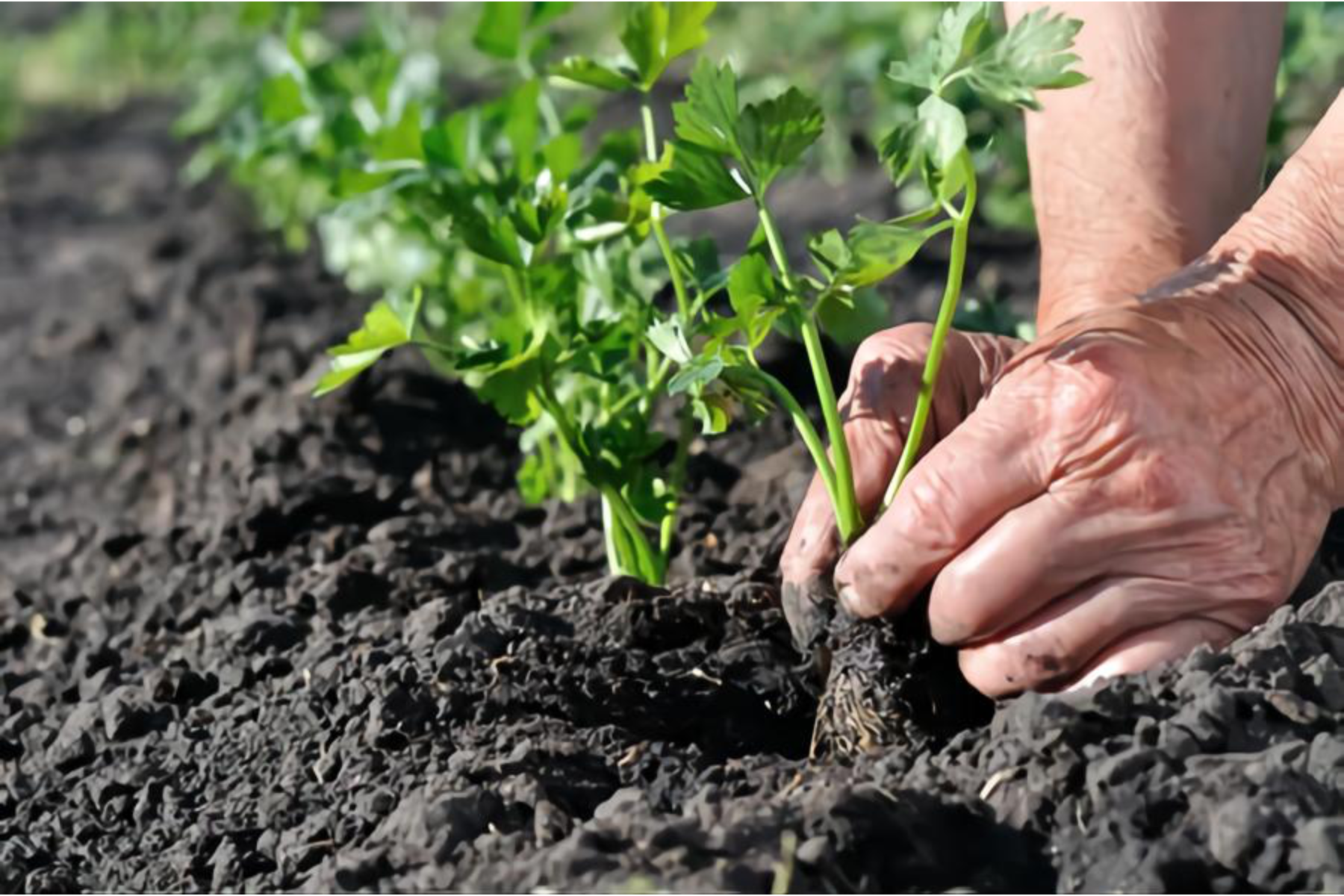Last Updated on October 8, 2022 by Real Men Sow
Although growing organic celery can be difficult, you will have peace of mind knowing your produce was not sprayed with pesticides. The fresh taste is superior to what you can buy at the supermarket. You’ll get a bumper crop in the fall if you give it lots of water and warm (not too hot) conditions.
Celery (Apium graveolens), a plant that produces leaf stalks of celery, is almost devoid of calories and full of important health benefits. These leaf stalks can be used in everything from soups and casseroles to cut down on calories. This low-fat, low carb food is rich in vitamin K which is important for blood clotting. It may also lower your chance of developing cancer.
Quick Guide: Planting, Growing & Harvesting Organic Celery
- Start seeds indoors between 10-12 weeks before last frost to prepare this long-season crop
- Plant celery in soil which is rich in nutrients that receives at least 6-8 hours of sun per day
- If you don’t water your plants regularly, the stalks will become very weak.
- Matures in 100-125 Days; Harvest by cutting stalks near the ground
- Fusarium wilt, aphids and garden slugs are some of the pests and diseases that plague plants and gardens.
Site Preparation
Celery thrives in moist, cool places. Choose a site with at least half the sun each day and rich in organic soil. Celery is a heavy feeder and should be planted after legumes.
How to Plant Celery
In the spring, seeds should be planted indoors in propagation boxes and then placed outside when the soil starts to warm. Place seedlings 8 inches apart, in rows of 2 feet. Every 2 weeks, apply liquid fish fertilizer.
Gardeners who have succeeded in growing organic celery in trenches, then mounding the soil over them as they grow, are some of the most successful. Some gardeners simply mound the soil as they grow to keep the plants upright. No matter what method you choose, ensure that your plants get adequate water and are well-mulched.
White stalks are considered a delicacy by some. Plant white stalks in milk cartons to block light from reaching the plants, but ensure that the leaves receive enough sunlight. Mulch with organic compost heavily around celery plants. Mulch helps to keep the soil cool and prevents moisture loss. It also creates stable, long-lasting soil that will last for your garden.
Harvest and Proper Storage
Start harvesting celery as soon as the stalks reach a size that is suitable for use. Use a pruning knife to cut individual stalks. Start with the outermost ones. Or, you can remove the root just below the crown. The harvest should take place between 100 and 125 days after the plant was planted.
You can keep celery fresh for up to a week in the crisper drawer of a refrigerator. Wrap the stalks in aluminum foil. Use no plastic bags.
Common Insect & Disease Problems
Check for aphids if your celery’s leaves turn yellow. Fusarium Wilt may also cause yellowing of the leaves. Fusarium wilt causes a one-sided growth pattern and vascular strands that become reddish brown from roots to leaves. If you see large, ragged holes in the stems or leaves, it is possible to be infected by garden slugs.
How To Save Seeds
In mild climates, this biennial can be kept in the ground. Celery should be pulled up from areas with severe winters and stored in a root cellar. The crowns of the plants should be exposed and trimmed. Plant celery outside in the early spring. Crossing flower stalks is not allowed. When the seed pods are dry, clean them by hand.

